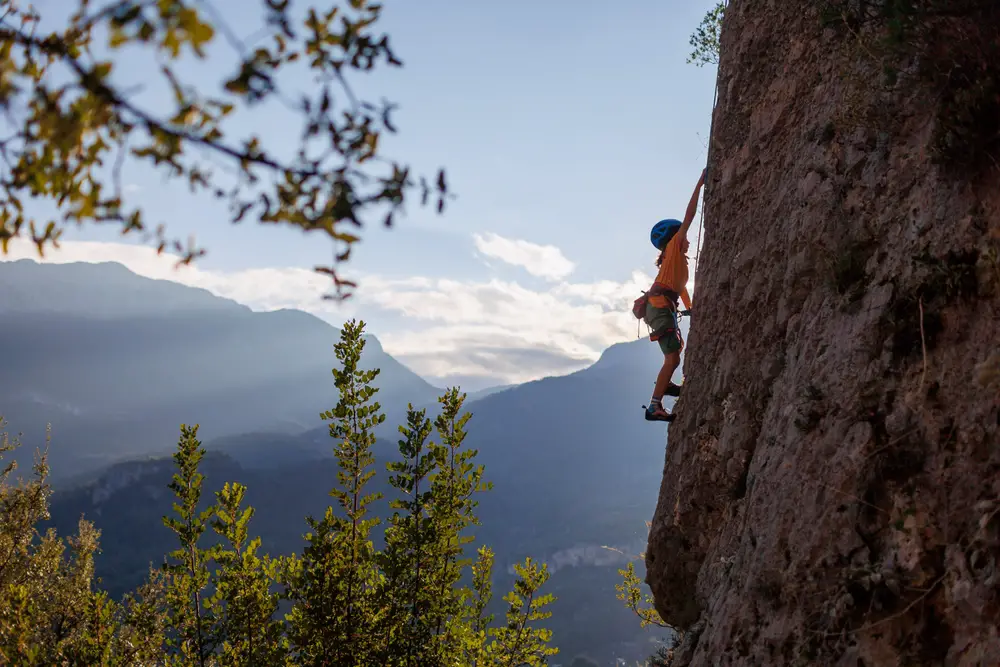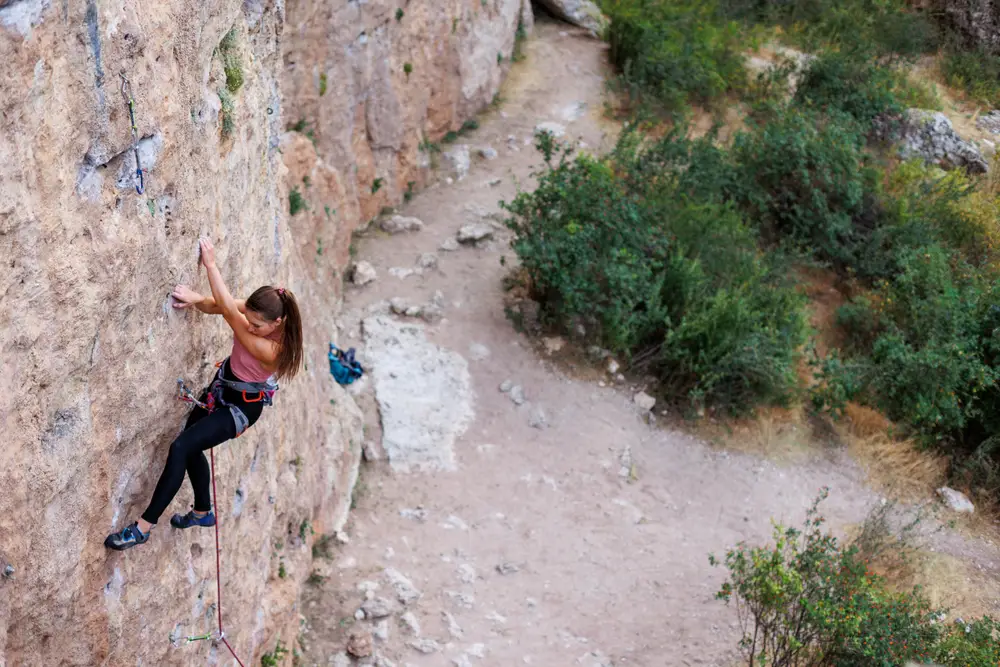Climbing climbing is a challenging sport that requires strength, endurance, technique and a lot of courage. Practiced in natural environments or on artificial walls, the sport has become extremely popular over the years, attracting fans all over the world.
This sport challenges athletes’ physical and mental limits, as it requires them to have a unique combination of skills to overcome the various routes and obstacles. All this, of course, with a guarantee of safety.
That’s why we’ve created a guide to the rules of climbing. In this content, we’ll cover everything from the structure of the venue to the duration of competitions, infractions and penalties, and much more.
So check out the main climbing rules you need to know!
Open your Betano account and get up to 1,000 reais in bonuses.
PIX payments, live games and super odds!
Click here to open your account!

Climbing rules: complete list
- Types of competition;
- Competition venue;
- Duration of the game;
- Scoring;
- Players;
- Equipment;
- Safety;
- Infractions and penalties.
Climbing rules: types of competition
There are three main types of climbing competitions. Check them out:
- Bouldering: involves short, intense climbs without the use of ropes, usually on walls up to 5 meters high. Safety is guaranteed by fall mattresses.
- Lead Climbing: in this activity, climbers must climb as high as possible on a pre-established route, using ropes for safety.
- Speed Climbing: in this activity, two climbers compete side by side to see who can complete the standard 15-meter route in the shortest time.
Climbing rules: competition venue
Climbing can take place indoors or outdoors. Here’s how it works!
In indoor environments, such as climbing gyms, the walls vary in height and complexity, and can be up to 20 meters high.
In outdoor competitions, on the other hand, natural walls always vary, requiring careful assessment to ensure that the routes are challenging but always very safe.
Climbing walls are therefore divided into different areas, each with a specific level of difficulty. These levels are determined by the slope of the wall, the size and arrangement of the grips and the length of the routes.
In addition, the fall area must be equipped with safety mattresses to protect climbers in the event of a fall!
Climbing rules: game duration
The duration of climbing competitions varies according to the type of event. Read more:
- In bouldering competitions, each athlete has a limited time, usually between four and five minutes, to complete each climbing problem.
- In difficulty climbing competitions, climbers have between six and eight minutes to climb as high as possible in a single attempt.
- In the speed climb competitions, athletes compete on a standard 15-meter course, and the winner is the one who completes the course in the shortest time.
It’s worth noting that the time is strictly controlled and any excess can result in penalties or disqualification of the athlete!
Climbing rules: scoring
Just like the length of the game, scoring also varies according to the type of competition.
- In boulder, points are awarded based on the number of problems solved and the number of attempts needed to complete them.
Climbers receive additional points for reaching specific checkpoints along the route, known as zones.
- In difficulty climbing, the score is based on the height reached by the climber. So the higher the athlete is able to climb, the higher their score.
If two or more athletes reach the same height, the tie-breaker is based on the time taken to reach that height.
- In speed climbing, the scoring is simple: the athlete who completes the course in the shortest time is the winner.
The timing system is highly precise to ensure that the results are fair and accurate.
Climbing rules: players
Climbing can be practiced individually or in teams!
In competitions, climbers always compete individually, even if they are part of a team representing a club or a country. Each athlete competes to achieve the best possible position in their category.
Teams are more common in training scenarios and in some recreational climbing disciplines. In relay competitions, for example, team members take turns completing different sections of a route, combining their efforts to achieve the best possible result.
Climbing rules: equipment
The equipment used in climbing is essential for the safety and performance of athletes. Here are the main ones:
- Climbing shoes: these are specific shoes that provide grip and precision.
- Belay: it is used to attach the rope to the climber.
- Climbing rope: is designed to withstand falls and wear and tear.
- Carabiners and safety devices: are used to anchor the rope and ensure the climber’s safety.
- Magnesium (chalk): is rubbed into the hands to improve grip.
In competitions, the use of equipment is strictly controlled and inspected to ensure that it meets the established safety standards.
Climbing rules: safety
Safety is the main concern in any climbing activity. Here are the main measures:
- Equipment check: before starting a climbing competition, both the climber and the safety partner should check all the equipment that will be used.
- Adequate training: all climbers must have adequate training in climbing techniques and safety.
- Use of helmets: is recommended especially in outdoor climbing to protect against falling rocks.
- Instructor supervision: in climbing gym environments, qualified instructors must be present to monitor the activity and provide assistance when necessary.
Climbing rules: infractions and penalties
Breaking the rules of climbing can result in penalties ranging from point deductions to disqualification. Understand:
- Improper use of equipment: the use of unauthorized or improper equipment is prohibited in climbing.
- Interference with other competitors: any form of obstruction or distraction of competitors cannot take place in the sport.
- Leaving the route: it is forbidden to deviate from the marks established on the climbing route.
- Exceeding the time limit: exceeding the time allowed to complete the route can harm the athlete and their team.
Penalties in the sport include deduction of points, disqualification and warnings.

Climbing rules: complete list
- Types of competition;
- Competition venue;
- Duration of the game;
- Scoring;
- Players;
- Equipment;
- Safety;
- Infractions and penalties.
If you enjoyed learning about the rules of climbing, take advantage of the fact that you’ve come this far and keep exploring the site for more information on this and many other sports. Don’t forget to comment on what you thought of the article and what else you’d like to read here!



